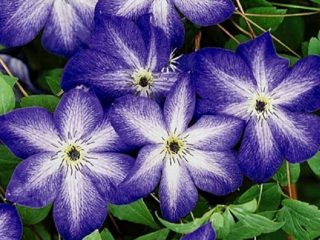Content
Echinacea belongs to the category of plants that combine decorative qualities and medicinal properties. Flower culture is successfully used to decorate the courtyards of country cottages and summer cottages; it is used in the design of urban recreation areas and local areas. Distinguished by its spectacular appearance, Echinacea Magnus has long been one of the most popular plants among florists.

The breeding of various varieties of Echinacea was actively carried out at the beginning of the century
Origin
Echinacea is native to North America. In the wild, flowers grow in the prairies located in the eastern part of the continent. The plant was brought to Europe in the 19th century, but spread massively in the 30s of the 20th century.
The genus belongs to the Astrov family and includes 10 main types of crops, which were the basis for the development of various ornamental varieties. All echinaceas are perennial flowering plants. Magnus is considered a classic representative of decorative culture.
Description of Echinacea Magnus
The herbaceous perennial plant Echinacea purpurea Magnus has several rough shoots up to 1 m high. The lower leaves form a basal rosette, the upper ones are arranged in a spiral along the stem. The petals, gathered around a terracotta cone of stamens and pistils, are painted in all shades of a pink and burgundy palette. The basket inflorescences reach 15 cm in diameter. By the beginning of autumn, many seed fruits are formed from them.
Flowering period of Echinacea Magnus
The flowering time of Echinacea Magnus lasts from early summer to mid-autumn. The fragrant plant attracts pollinating insects from all over the area, primarily bees and butterflies.
Advantages and disadvantages
A special feature of Echinacea purpurea Magnus is its compact bushes with vertical shoots. Despite the large inflorescences, the plant stably retains its shape throughout the growing season.

Long-lasting and abundant flowering allows the use of an ornamental crop to decorate various landscape forms.
Pros:
- ease of care;
- good immunity to infections;
- resistance to insect pests;
- high level of winter hardiness;
- the possibility of using the plant in folk and official medicine.
Minuses:
- It is necessary to comply with the watering norm, since a lack of moisture affects the external condition of the plants, an excess can cause fungal diseases;
- it is necessary to create shelters for plantings in winters with little snow.
Rules for planting Echinacea Magnus
Echinaceas are planted in open ground in spring or autumn.However, experienced gardeners recommend sowing in September-October, since the process of softening the seed shell and further germination takes more than six months. When choosing a site for a flower garden, it is important to take into account a number of requirements.
- The place should be well lit by the sun.
- Nutritious soils with a neutral or slightly alkaline reaction are preferable.
- The composition of the crop is most suitable for light sandy soil. Clay soils are contraindicated.
- The plant should not be planted in low-lying, wetlands.
The soil for the flower garden should be deeply cultivated. The area is dug up and, if necessary, enriched with fertilizers. For seeds, make holes 5 cm deep. At 1 m2 agricultural technicians recommend planting no more than seven copies of echinacea. When placed in rows between the bushes, maintain a distance of 35 cm. Close arrangement adversely affects the condition of the plants.

The soil in the area with young bushes of Echinacea purpurea is mulched with compost or peat to maintain the desired level of moisture.
Caring for Echinacea Magnus
Echinacea Magnus does not require special care. Among the mandatory agrotechnical procedures for cultivation:
- regular soil moisture in the first year; mature bushes can more easily tolerate a lack of water;
- after planting, the plant does not need fertilizing; in the future, the flower garden will be fertilized twice - in early spring with manure or compost and during budding with a mineral complex;
- in March-April, bushes are pruned;
- During the summer, faded flower heads are removed.
In autumn the bushes are pruned. The remaining stumps 3 cm high are covered with non-woven fabric if the forecast predicts a little snowy winter.
Reproduction
The most affordable and convenient way is to propagate flower crops by seeds. Material for sowing can be purchased at gardening stores. Many gardeners prepare it themselves.
It is possible to propagate Echinacea Magnus by dividing the bush. 3-year-old specimens are most suitable for this purpose. Divide the flower bush in early spring or autumn, before frost sets in. The procedure includes:
- digging up the mother form of the plant;
- carefully separating several parts with pieces of root with a sharp shovel or knife.
The resulting fragments of the bush are planted in the usual way. As a rule, Echinacea purpurea takes root well in a new location.
Echinacea Magnus in landscape design
Although Echinacea Magnus has been cultivated for many decades, the plant has become especially popular in recent years. The bright variety is planted in mixed flower beds and mixborders.

The crop looks impressive in combination with ornamental grasses
Echinacea Magnus goes well with plants such as:
- sage;
- phlox;
- chrysanthemums;
- chamomile;
- asters;
- Chinese miscanthus;
- sedum
A colorful landscape composition can be created from several varieties of Echinacea. In this case, experts recommend planting together crop species that bloom at the same time.
5
Echinacea Magnus attracts bees, so flowers are planted in the area to ensure high-quality pollination of other plants
Conclusion
Echinacea Magnus is a common variety of flower culture, the popularity of which has been confirmed by time. This plant, beloved by gardeners, has been widely used in landscape design in recent years.Purple flowers fit perfectly into both small and large garden spaces.
Reviews of Echinacea purpurea Magnus








